How many of you have seen this in your Google Analytics dashboard? Isn’t it depressing?

If you’re reading my blog I’m sure you’ve seen this, you’ve felt the excitement of launching a product and the disappointment a day after when you lose all that traffic following the launch and you’re back to where you started. I’ve been there myself. I remember launching an app six years ago, I was clueless about marketing back then, we spent three months building the product and when it was ready to launch the job fell on me to launch it and get our first customers.
I did what most startups do, about a week before the launch I blasted 100 reporters at TechCrunch, Mashable, VentureBeat, TheNextWeb, and a bunch of other publications with a pretty generic email about our launch and why our tool is the best thing since sliced bread. I sat back and was excited, I could not wait for the traffic to start rolling in. The morning of the launch TechCrunch wrote up the following article which absolutely killed us:
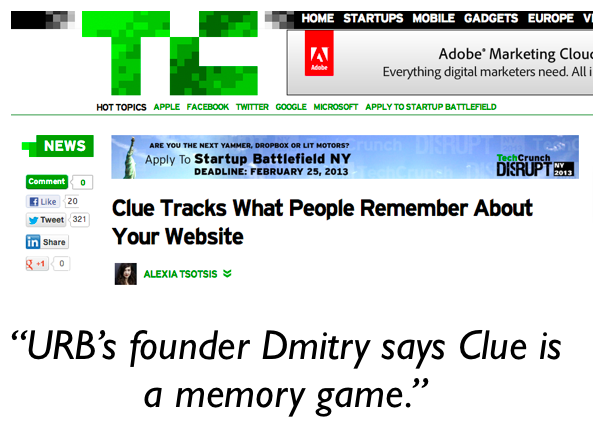
First of all I was not the founder of ZURB, second of all the company was ZURB and not URB, and finally the product we were launching was by no means “a memory game” 🙂 I quickly learned that if you’re going to launch a product:
- you do NOT start pitching a few days/weeks before launch
- you do NOT mass email reporters
- you should invest serious time to build long term relationships with relevant reporters
- you do a soft launch with a handful of customers to test out your product and positioning
Over the last 6 years I’ve launched dozens of products for different startups and have practiced turning the graph above into something which looks like this:

I’ve been asked many times: What are the steps to launch a product and sustain traffic to it after? That “sustain traffic” part is really hard. For the purpose of this article I will use a real example of how I launched JustReachOut – a tool I made a few months ago with a friend of mine to help startups build relationships with press. In just a little over a month we grew to 20+ paying customers.
Without further ado here we go, my step by step of launching JustReachOut and figuring out how to sustain growth.
- I Sold JustReachOut to friends using sketches (I had nothing built at this point)
- I sold JustReachOut To People I did not know (I had nothing built at this point)
- I Changed Language I Used To Describe the App
- I Built Genuine Relationships with Press (as I started building the product and onwards)
- Soft Launch Over Email
- Soft Launch on Hacker News
- Soft Launch on ProductHunt.co
- Soft Launch on Startup Digest
- Real Launch – I Skipped Mainstream Press
- Real Launch – Search for Sustainable Growth
—
I Sold JustReachOut to friends using sketches (I had nothing built at this point)
That’s right, I had nothing built and I was trying to sell people to use JustReachOut. I learned this back when I worked at ZURB, we would do this using sketches of what the future tool would look like hung up on a whiteboard. We would talk about different features we sketched out and how they would work.
So I did exactly this with JustReachOut. I would pitch the idea of the tool to my friends and I’d explain how it would work with sketches to all my friends and colleagues. My goal was to see if people would be serious about buying my service.
Here is how this looked:

Image is jacked from ZURB’s flickr stream
I sold JustReachOut To People I did not know (I had nothing built at this point)
I then tried to sell JustReachOut to people I did not know, this was much harder. I could not rely on compassion from my friends about my idea for an app. People I didn’t know had a hard time paying attention to me as I described my idea. I practiced pitching JustReachOut constantly with folks I’d meet at meetups. I still had nothing built at the moment but I was already trying to sell it.
My goal was to sell 10 people. I told myself I will not write one line code until I have 10 people who agree to buy the service for something more then $50 a month. It’s a tall order I know. However after talking to many startups it seemed that most of them were paying MUCH more for a PR services which were not working out very well for them.
I would ask friends who I already sold JustReachOut to (from step 1 above) to introduce me to people they know who might be a good fit for my service. My selling never actually consisted of selling the product and it’s features, instead I would ask for feedback about my idea. Everyone loves to give feedback and I used that fact to get people talking about my service. I would continue these conversations throughout months to come as I started building the tool.
I went to meetups, conferences, networking events, pitchfests, hackathons, random events at MIT and really anywhere I could find the types of folks who would buy JustReachOut. Whatever it took, I had to have 10 people who agreed to buy my service. As my good old friend Noah Kagan once put it: If people are prepaying for airline tickets and hotel reservations and donating to Kickstarter campaigns why would they have a problem prepaying for JustReachOut?
I Changed Language I Used To Describe the App
I still had not written a line of code but as I pitched JustReachOut I got a LOT of feedback. I paid a lot of attention to how people reacted when I presented JustReachOut using different wording such as:
JustReachOut is a tool for anyone to quickly email tons of journalists.
or
JustReachOut is a tool for startups to build relationships with journalists.
I searched the web and read articles and blog posts by the very people experiencing the problem I was trying to address with my tool. I paid attention to how they spoke about the problem. Here are a few examples:
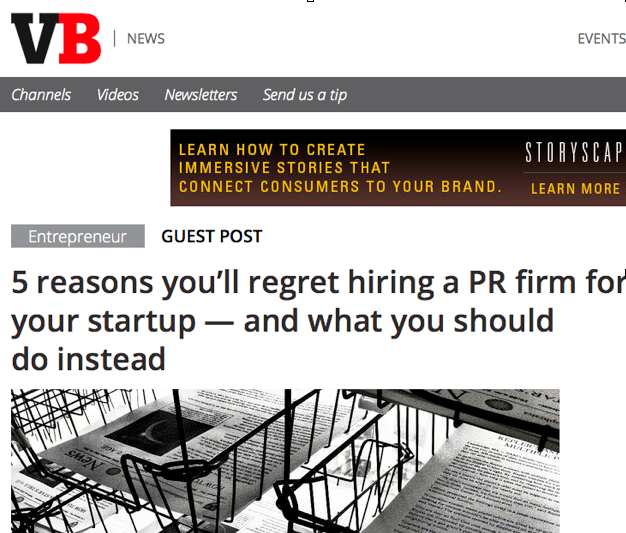
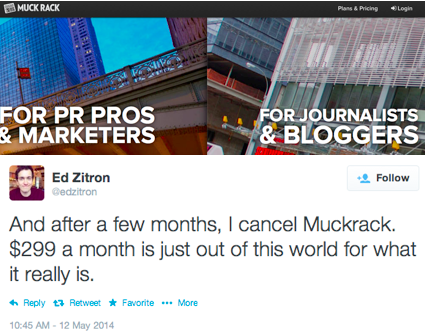
I was trying to understand how are people addressing this problem? How are they talking about it? This helped me refine the language I used to describe my app. I also used third party validation from the research I did on the internet to help me pitch and sell the tool.
I Built Genuine Relationships with Press (as I started building the product and onwards)
I started building relationships with reporters who might cover JustReachOut before I started selling the idea of the app to my friends. I continued to do this as I built the app, as I soft-launched it, and actually I am still doing this.
The issue I see with most startups is they want to blast and email list of thousands of reporters, get a few pieces written up about them and forget about press until they need it next time. It’s pretty much the same as hiring a prostitute vs. dating someone. A real relationship is much harder to build and maintain but of course the pay off is much greater as well.
Here is how I build relationships with reporters, I have a thorough article, a course, and a tool to help you do this:
1. I wrote an article for Mashable about how to build relationships with press a while ago which I still get emails about.
2. I made a Udemy course about building relationships with reporters. This is my 6 years experience of doing this all condensed into 30 minutes. Use the code “hottomales” to get in for free.
3. About a month ago I launched JustReachOut – an app to help startups build genuine relationships with reporters. Here is a quick video demo of how it works.
Toward the end of prelaunch stage:
- I sold 10 customers before launching
- customers got my product story
- I built 10 relationships with reporters
Now the launch. For the actual launch I decided to forgo traditional press, go easy and let just a few people in at a time. I called it a “soft launch”. The reason being is that I really wanted more feedback before I went mainstream with it and had press cover it.
Soft Launch Over Email
I emailed close friends and acquaintances. Here is how I did this:
Soft Launch on Hacker News
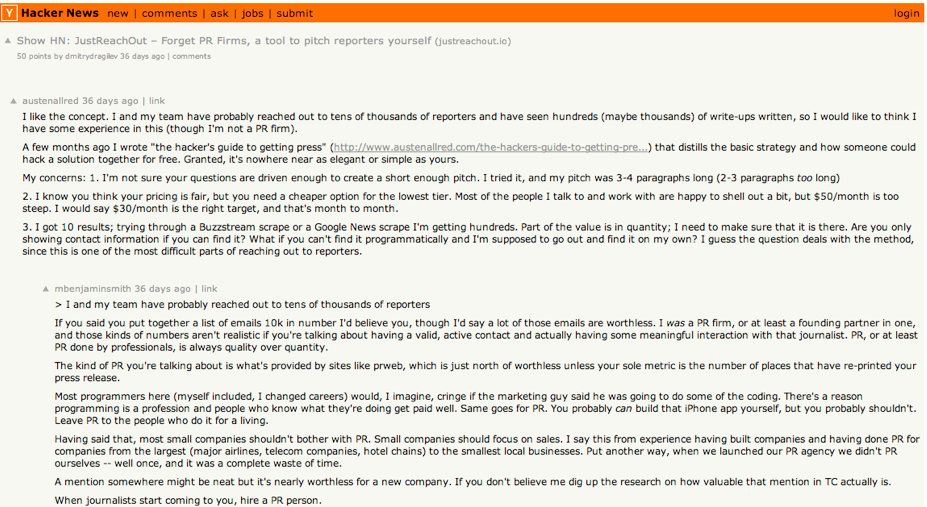
Soft Launch on ProductHunt.co
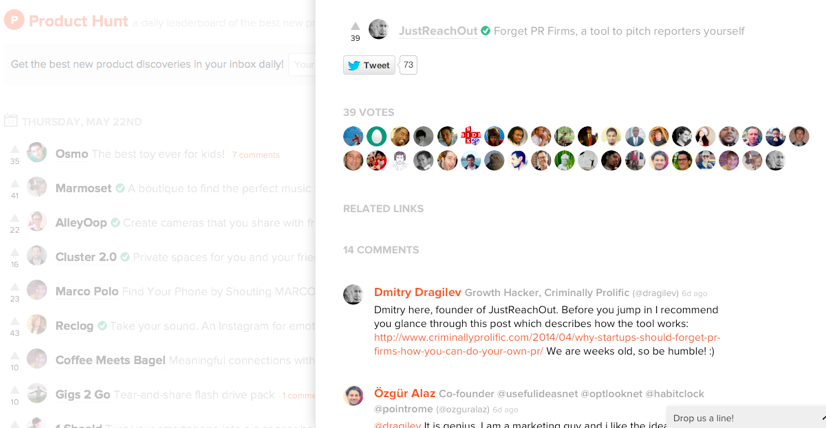
Soft Launch on Startup Digest
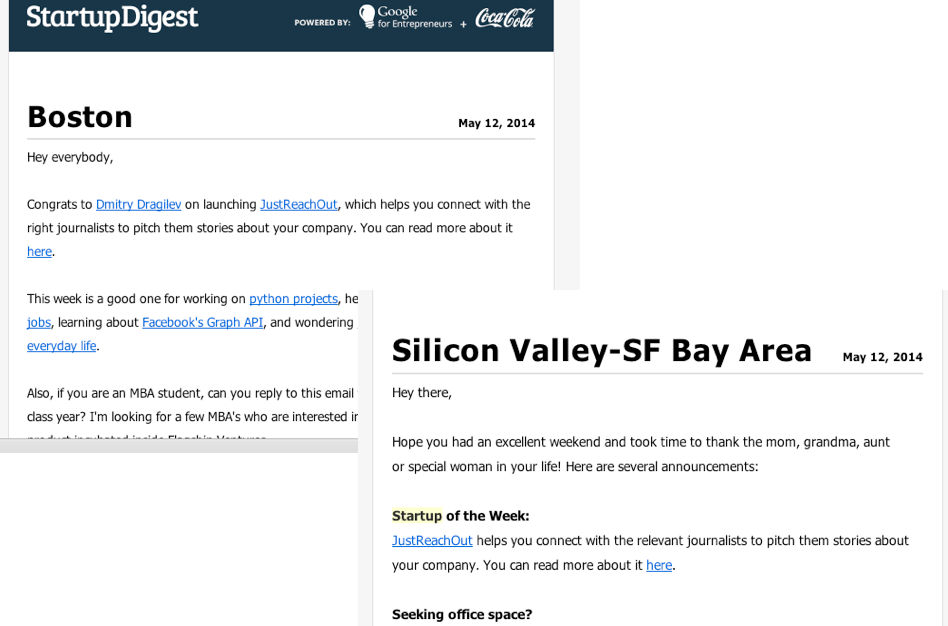
I did this with Reddit, Twitter, Inbound.org and GrowthHackers.com as well. You get the point, every week or so I would let a few more people in by getting a little burst of traffic to my site through these activities. I would get feedback from my new users, fix the issues that needed to be taken care of and move on.
At the end of soft-launch stage:
- I got a lot of feedback from customers
- I understood product pitfalls and fixed many of them
- I built 5 more relationships with reporters, kept on with it.
Ok, on to the final part, the real launch and thereafter.
Real Launch – I Skipped Mainstream Press
I was at this stage a few weeks ago, the real launch. I had 15 relationships I built up with reporters. 10 from prelaunch and 5 from soft-launch phase above. I built these relationships using JustReachOut.io along with the techniques in my Udemy course and Mashable article about building relationships with reporters.
When I say I had 15 relationships built I mean I had 15 email threads which have at least 5-10 back and forth email exchanges between myself and the reporter. At this point I could just ask them to cover my tool perhaps but I know I’ll get a big spike and then it will come down. I decided I rather find a sustainable growth channel and once I’m rocking with it I can push press articles out. So I started looking for a sustainable growth strategy, I skipped this step and on to step #9.
Real Launch – Search for Sustainable Growth
I’m on this step right now as I’m writing this blog post. I want to find a user acquisition channel which will consistently give more and more conversions for JustReachOut. I do not want a traffic spike and then for it to come right back down. I want traffic which increases with every day and converts very well. Here are some ways I’m going about finding and testing different channels:
Search for Sustainable Growth – Outbrain
Not too long ago I wrote an article on my blog titled Why Startups Should Forget PR Firms & How You can Do Your Own PR which did pretty well at giving me a little boost in sign ups.
So I decided to use Outbrain to feed more traffic into it. The way Outbrain works is that once you add your blog post or article URL into the tool it fronts it up across millions of sites in “More from around the web” section under articles on their pages, it looks like this:
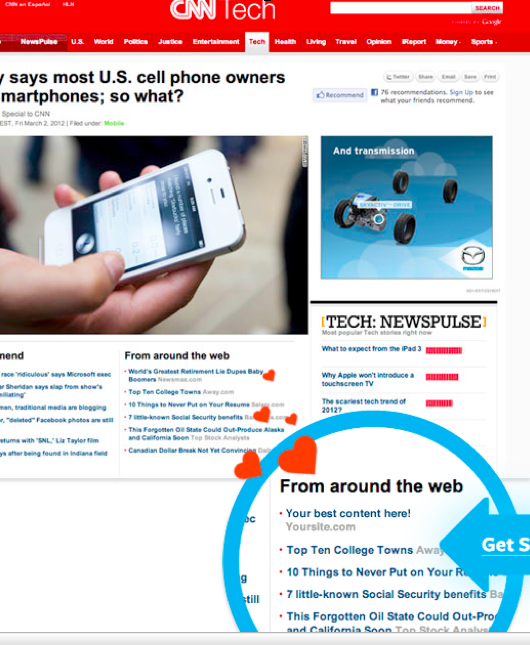
I’ve been testing this for about a week at this point and it’s working pretty well. I’m still trying to figure out which publications give the best conversions through this.
Search for Sustainable Growth – Guest Articles
I also started drafting up two guest articles for publications which are read by my prospective customers. I plan to do this a lot going forward, for all the startups I’ve worked with this has been a proven strategy to get valuable traffic.
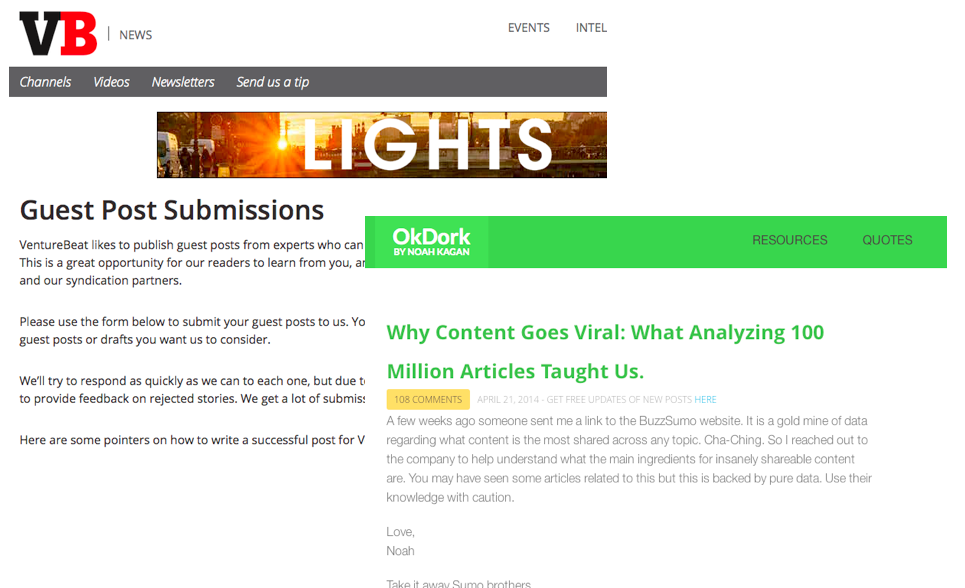
Search for Sustainable Growth – Blog Post with Long Tail Keywords
I also started writing blog posts using long tail keywords using a little tool called SerpIQ. I basically find long tail keywords and write a blog post on that topic which shows up in top 10 Google search results. I wrote one such post very recently titled 6 Growth Hacking Tools I Love. It shows up as #5 on google for “growth hacking tools“.
In the beginning of the blog post I put a blurb about JustReachOut and so folks who click over and read the content check out my tool. This is sustainable since I can write more posts which use the keywords from SerpIQ.
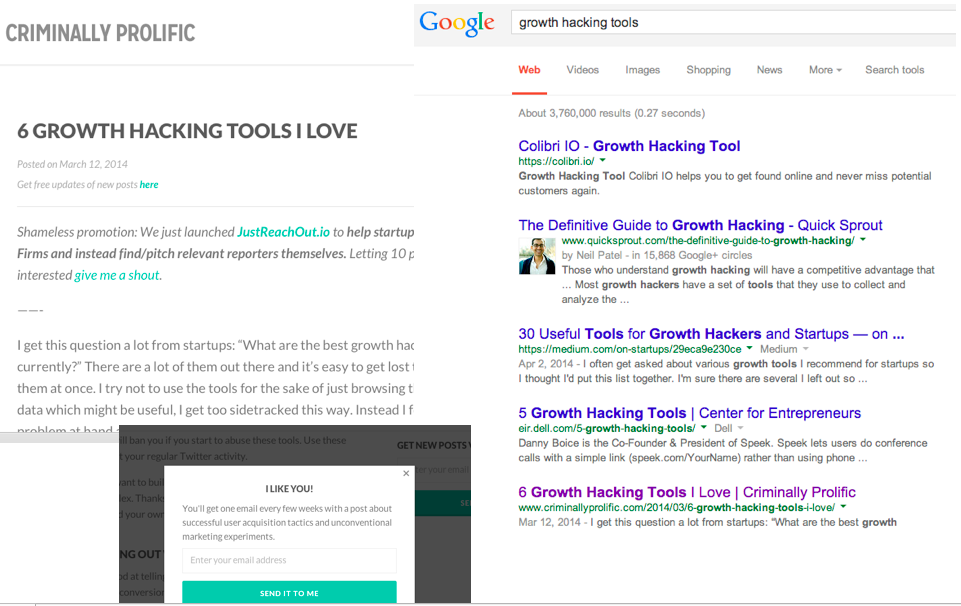
Search for Sustainable Growth – Email List for Your Blog
Something else I added to my blog as I am looking for sustainable growth is a pop up much like Noah Kagan has on his site OKDork asking people to subscribe to my email list for future blog posts. Roughly 5% of everyone who comes to my site signs up which is amazing! I personally email every single person who signs up on my blog and connect up with them. I genuinely want to know who the people are that read my posts. This reaching out has proved to do wonders in terms of generating new customers for JustReachOut. Here is an example:
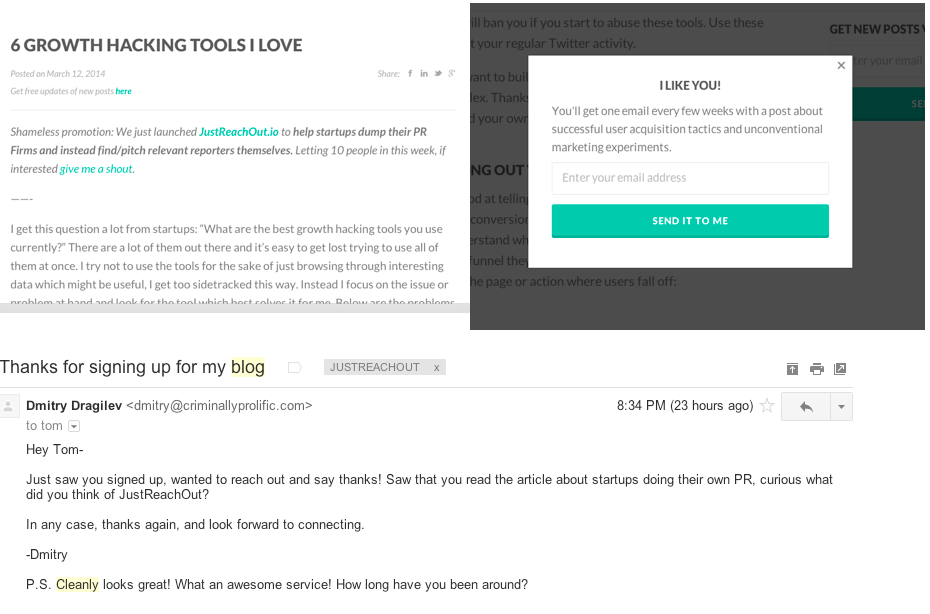
Search for Sustainable Growth – Quora
I also became active on Quora and started responding and connecting with people asking about PR software and tools:
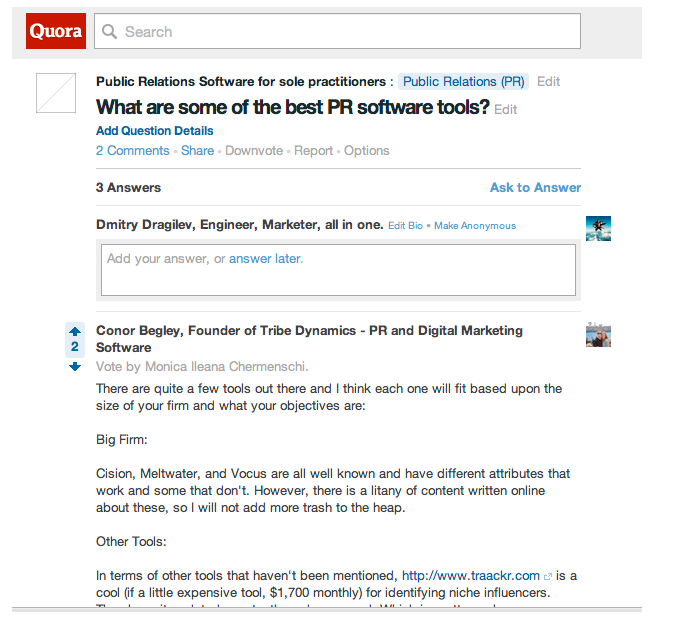
Search for Sustainable Growth – BuzzSumo
Finally I started using BuzzSumo a lot trying to find the most shared articles about PR tools or PR in general and reaching out to bloggers and reporters writing about PR. I want to hear their feedback about JustReachOut and who knows, in the process they might share the tool with their readers.
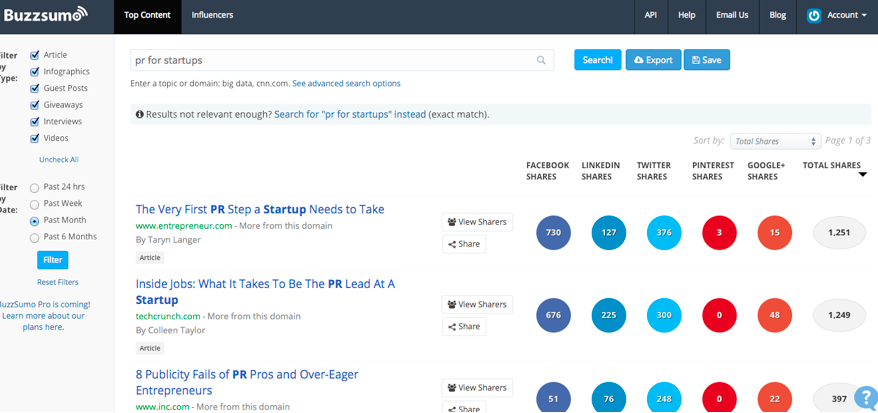
Too sum this up: I’m currently looking for long term sustainable growth channel for JustReachOut. I had a successful soft launch. I got a good amount of people paying for the app. I built a lot of relationships with press but have not asked them to cover me just yet. I have proven that people will pay for the tool. I am now figuring out which channel works best at driving the right type of customers to the app.
Once I figure out the right channel or a combination of channels for sustainable user acquisition I can turn up the dial on those activities and let it rip. I can then push press articles to feed traffic even more.
I was able to get 20+ people to sign up and pay for JustReachOut in a little over a month since it went live which is pretty good. I’ll report on how it’s going in the months to come.
If you forget everything you’ve read so far which you very well might, there are two things I hope you remember from this post, I had to learn these lessons the hard way:
1. Sell your product idea and get 10 people committed to being a customer before writing a line of code.
2. Start building relationships with reporters 6 months before your launch.
I hope this was useful, I’d love to hear your comments, advice, and feedback below.
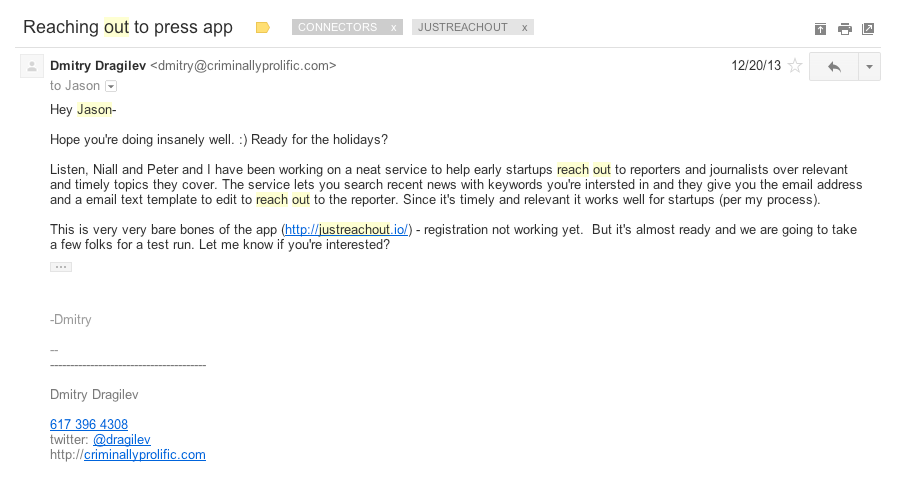
Great post, and good advice. I think one of the biggest traps a lot of entrepreneurs fall into is the temptation of a the “big reveal”. Perhaps it’s a lifetime of surprise birthday parties and Christmas, and birthday presents, but I think everyone intuitively wants to toil away at their baby until it’s fully complete and then show it to the world with a bit TADA!
The problem with that approach is it ends up being a really big gamble. On the product side you end up putting a lot of eggs into unproven baskets and inevitably end up getting a batch of bad news at once rather than “bite sized pieces”. Perhaps even more difficult is what you point out here, from a sales and marketing standpoint a big TADA really puts you behind the 8 ball in terms of customer acquisition.
They say (well I say) “build it and they will come” is a terrible launch strategy, and by following some of the advice you laid out, you can help mitigate that risk. Thanks!
Thanks man, you got it. I mostly never ever launch anything with one big bang without having paying customers already and doing a bunch of little soft launches as I point out in this post. I’d say go even a step further and try to sell your idea to people before you try to build it, really sell it, try to get people to commit to pay for it.
p.s. forewards looks like a sweet idea btw.
Thanks Dimitry!
We’re a few months out from our launch… So that means I’ve got a lot of work to do based on the checklist you’ve laid out above 🙂
Great post Dmitry! Great to see that you started with the low hanging contacts – friends etc and worked from there.
Thanks for mentioning the tools that you’re using as well, I’ll be trying them out shortly – once I’ve found my first 10 customers 😉
No worries Louis! Glad to hear this was helpful. Get those people paying ya before you start building something, best way to do it! What are you working on?
Great post, Dmitry.
One thing that may be holding people back from applying this strategy is the fear that “someone will steal their idea.” There’s this misconception that all you need is “the right idea.”
Thanks, glad you enjoyed the read. You know it’s such an old wives tale: people will steal your idea and go big with it, you should be careful, get a patent first, etc. Reality is that ideas area dime a dozen and it’s the execution that counts. Take any product out there and there have been multiple people with the same idea, the folks who won executed better.
Great article! Really enjoy reading it and looking at your experimenta! Many people are crazy about Growth Hacking when they dont have no paying customers. I think your blog post is the best example of Traction Hacking and your journey to product/market fit!
In my blog I wrote a few days back a similar post in spanish about how to get your first 10 customers!
Hope to see more great stuff like this!
Thanks Mijael! Right on. Got a link to your article?
I guess with all of crowdfunding platforms in the market people do find it easy to turn their app ideas into reality but there are cases when others have stolen the ideas from the platforms and developed it.
Dead on. Very, very insightful. Been tracking your work since I left “Z” and it seems our moves in the beginning were the same. Thanks for putting this article together D.
No worries! Glad you’re loving it!
Probably the best post I’ve ever read about launching a project. Thank you so much to really explain your process and tools you used.
I’m working on some minimal viable products to launch following the lean startup principles and this article helps me a lot. I will try this out and blog about it as well, you’ll be notified when I do 😉
Thanks again,
KR
Kenny
Yes, this is a great post.
But find customer’s who want to ” pay ” for a service that does not ” exist ” is hard ( don’t you need an investor ? ).
And anyway, even if you find them, then you need to get the work done in the less time possibile ( this mean pressure ).
Excuse me for typo, and thanks for this post, really well made.
Naw you’d be surprised. People will prepay for something if they see value in it.
Hey, nice and amazing information thanks for sharing!
Hey Dmitry!
Thanks for the article! I was literally minutes away from investing in leadpages (somehow this article showed up in my gmail search for leadpages), and after reading this I realize I was about to try and mega-launch my hypnosis trainings without fully knowing how to do market research. I’m fact there doesn’t seem to be very much useful content anywhere about how to build up to a launch anywhere near as useful as this article although it leaves me with a few questions.
One question is, how would you recommend doing soft launching to blogs/quora etc for a service like hypnosis training and coaching packages?
I really hope you get this – I know it’s been a while since you wrote this article but if you don’t I will look you up elsewhere in a couple days.
Thanks a million!
Gabriel
Thanks for the note Gabriel! Best way to soft launch anything is to have an email list. Take a look at this for how to grow your email list: http://www.criminallyprolific.com/2015/09/7-proven-ways-to-grow-your-email-list-by-3x-every-month/
Having an app means having a business. And if no one knows about it, no one will use it. To acquire users, you need a marketing plan.
100% agree with ya Den!